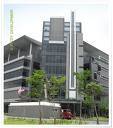THE concept of boutique developments is fast becoming an attraction in the property market nowadays.
Gamuda Land Sdn Bhd managing director Chow Chee Wah says usually, the design of a boutique development is for the middle to high-end housing, catering to a special targeted niche market that has a discerning taste and appreciation for resort lifestyle living.
“Gamuda Land has a few boutique developments, namely Valencia in Sungai Buloh, Jade Hills in Kajang and Madge Mansions in Kuala Lumpur. Both of these landed developments – Valencia and Jade Hills – are within the 300-acre range, while Madge Mansions, our high-end condominium is on 2.16 acres,” he says in an email.
 Valencia residents enjoy a private 9-hole golf course and country club.
Valencia residents enjoy a private 9-hole golf course and country club.Chow defines Gamuda Land’s concept of a boutique development as one with a low density ratio and a host of other Oooomph! factors.
“It has to be very exclusive, very private with top security features in placed. Added to that is the ambience and this includes a host of criteria – quality products, safety and security, tranquil environment, well-equipped facilities, status and class, and a good return on investment, he says.
He says Gamuda Land first ventured into boutique developments in the year 2000 with Valencia.
“This luxurious project became the first boutique development in Malaysia with a private 9-hole residents’ golf course and country club. Valencia soon became a much sought after address because it offers the perfect combination of living in a landed property with condominium living facilities.
“It is a private, exclusive development within an environment equipped with the best resort facilities for a healthy and secure living lifestyle,” he says.
Facilities and ambience aside, Chow says a boutique development is also about location. It has to be a prime address that an owner will be proud of.
“It is about being a class above others,” he says.
“Gamuda Land decided to undertake this type of projects because we saw a growing demand and need for it. In urban areas, especially in the Klang Valley, the growing population of the affluent and elite group are looking for residences that meet their needs and desires for fine resort living.
“Valencia and Jade Hills testify to our success in this boutique home category. More than 60% of Valencia purchasers are repeat buyers. Thirty percent of Valencia’s residents today are expatriates, a large majority of them are Europeans. This means our boutique developments have become prime investments,” he says.
Because developers saw the popularity of boutique properties, they are now beginning to offer boutique commercial developments.
IRDK Land Sdn Bhd director Datuk Kevin Woo says such developments are not a trend but a need as the market evolves.
“The difference between boutique commercial developments and other commercial developments is the concept and setting of the development. It gels the business with lifestyle elements by providing and facilities,” he says.
The company is developing a boutique commercial development called Alam Avenue in Shah Alam, comprising 51 commercial units on three-storey intermediate shop offices and five-storey corner and end units.
“The ground floor will have a floor to ceiling height of 4.5 metres (15 feet). It will be generously fitted with high quality zinc aluminium roller shutters of 10 feet high to give maximum advertising and showroom presence.
These shops will have generous 17-feet verandas and walkways frontage to accommodate alfresco dining and cafes. They will be tiled luxuriously with homogenous floor tiles. Decorative light fittings will be installed at the walkways to enhance the ambience and to exude on easy flamboyant lifestyle where business and leisure meet in a quaint setting,” he says.
The gross development value of the project is about RM100mil. It is scheduled to be completed by December next year.
A green development is another concept introduce by developers. Sentral City (M) Sdn Bhd has gone one step further by incorporating a touch of Zen in its green concept development in Puchong Zen Residence@Asplenium condominium.
General manager Pang Swe Haw says the word Zen has been widely used in different industries like food and beverages but nobody has attempted to define the true meaning and essence of Zen.
“Zen is a living philosophy which centres around the simplicity and beauty of nature around us.
“In Zen Residence, we aim to create landscape and architecture settings that encourage the residence to take a longer and closer look at the environment around them and hope they will be able to develop a greater insight and appreciation of nature.
“So, we may not be the one who first use the word Zen, but we are the first to really explore and implement the Zen living concept,” says Pang.
With GDV of about RM96mil, Pang says Zen Residence has achieved close to 90% sales to date. The company will continue to explore this concept in their next project that is currently on the drawing board.
Source: The Star 29 August 2009





.jpg)
